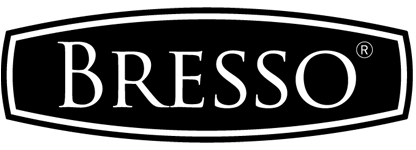Here’s a breakdown of commercial oven types, their key features, and best-use scenarios to help you choose the right one for your bakery or food business:
1. Deck Ovens (Layered Trays)
- How it works: Multiple stacked trays (typically 3–6) with independent temperature zones.
- Best for: Artisan breads, pastries, cookies, multi-batch baking.
- Pros: Excellent heat retention, durable, ideal for high-volume bakeries.
- Cons: Slower preheating, requires more space and training.
- Popular Brands: Garland, Vulcan, Rational.
2. Convection Ovens (Fan-Assisted)
- How it works: Built-in fans circulate hot air for even heat distribution.
- Best for: Cakes, pastries, soufflés, meringues, cookies.
- Pros: Energy-efficient, faster cooking, compact options.
- Cons: May dry out crusty products (add steam if needed).
- Popular Brands: Miele, Beko, Amana.
3. Steam Ovens (Steam Injection)
- How it works: Injects steam during baking to control moisture and crust formation.
- Best for: Crusty breads, buns, brioche, soft pastries, meats.
- Pros: Perfect crusts, versatile for steaming and baking.
- Cons: Higher initial cost, requires regular maintenance.
- Popular Brands: Rational, Gaggia, Breville.
4. Rotisserie Ovens (Pizza/Roast Specialized)
- How it works: Rotates meat or pizza on a spit or rack for even cooking.
- Best for: Pizza, roasts, whole chickens, large cuts of meat.
- Pros: Excellent heat retention, fast cooking, compact.
- Cons: Limited flexibility for non-pizza items, higher fuel costs.
- Popular Brands: Blodgett, Garland, Forno Bravo.
5. Combination Ovens (Steam + Convection + Dry Heat)
- How it works: Combines steam, convection, and dry heat modes in one unit.
- Best for: Multi-functional baking, high-end restaurants, diverse products.
- Pros: One unit replaces multiple ovens, advanced programming.
- Cons: Expensive, requires technical training, larger footprint.
- Popular Brands: Convotherm, Rational, CombiMaster.
6. Infrared Ovens (Fast Heat)
- How it works: Uses radiant heat for rapid cooking.
- Best for: Reheating, finishing dishes, quick-service restaurants.
- Pros: Extremely fast preheating, low energy consumption.
- Cons: Not ideal for long baking times, limited capacity.
- Popular Brands: Salamander ovens, Farberware.
7. Pizza Ovens (Wood-Fired/Gas)
- How it works: High-heat stone or metal chambers for authentic pizza baking.
- Best for: Wood-fired/Neapolitan-style pizzas, pizzerias, specialty bakeries.
- Pros: Authentic taste, can double as a kitchen centerpiece.
- Cons: Requires skilled operators, high fuel costs.
- Popular Brands: Forno Bravo, Tandem, Ooni.
Key Considerations When Choosing an Oven
| Factor | Deck Oven | Convection | Steam | Rotisserie | Combination |
|---|---|---|---|---|---|
| Heat Control | High | High | High | Medium | Very High |
| Versatility | Medium | High | Medium | Low | Very High |
| Energy Efficiency | Medium | High | High | Low | High |
| Best for Bread | ✅ | ❌ | ✅ | ❌ | ✅ |
| Best for Pastries | ✅ | ✅ | ❌ | ❌ | ✅ |
| Space Requirements | Large | Medium | Large | Small | Large |
Real-World Examples
- Deck Oven: A French bakery uses a Garland deck oven to bake baguettes, croissants, and sourdough in separate zones simultaneously.
- Steam Oven: An artisan bakery relies on a Rational SRO to create perfectly crusty ciabatta with steam injection.
- Combination Oven: A high-end restaurant uses a Convotherm to roast meats, bake pastries, and steam vegetables in one unit.
Conclusion
By matching your product type, production volume, and kitchen layout to the right oven, you can optimize efficiency, quality, and profitability.

